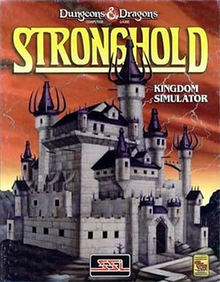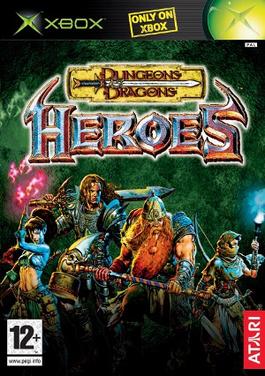
Dungeons & Dragons: Heroes is a hack and slash video game with RPG elements. It was published by Atari Interactive and developed by the subsidiary's Hunt Valley development studio, exclusively for Xbox in 2003. It is set in the Dungeons & Dragons universe and is playable solo or with up to four players. Players take on the role of four reincarnated heroes brought back to life to fight their former nemesis, a wizard named Kaedin.

Pool of Radiance is a role-playing video game developed and published by Strategic Simulations, Inc (SSI) in 1988. It was the first adaptation of TSR's Advanced Dungeons & Dragons (AD&D) fantasy role-playing game for home computers, becoming the first episode in a four-part series of D&D computer adventure games. The other games in the "Gold Box" series used the game engine pioneered in Pool of Radiance, as did later D&D titles such as the Neverwinter Nights online game. Pool of Radiance takes place in the Forgotten Realms fantasy setting, with the action centered in and around the port city of Phlan.

Pools of Darkness is a role-playing video game published by Strategic Simulations in 1991. It is the fourth entry in the Pool of Radiance series of Gold Box games, and the story is a continuation of the events of the third game, Secret of the Silver Blades. Like the previous games in the series, it is set in the Forgotten Realms, a campaign setting from Dungeons & Dragons. Players must stop an invasion from an evil god, eventually traveling to other dimensions to confront his lieutenants.

The Bard's Tale II: The Destiny Knight is a fantasy role-playing video game created by Interplay Productions in 1986. It is the first sequel to The Bard's Tale, and the last game of the series that was designed and programmed by Michael Cranford.

Advanced Dungeons & Dragons: Heroes of the Lance is a video game released in 1988 for various home computer systems and consoles. The game is based on the first Dragonlance campaign module for the Dungeons & Dragons fantasy role-playing game, Dragons of Despair, and the first Dragonlance novel Dragons of Autumn Twilight.

Spelljammer: Pirates of Realmspace is a video game for MS-DOS released by Strategic Simulations in 1992. It is a Dungeons & Dragons PC video game using the Advanced Dungeons & Dragons, Second Edition rules, and the Spelljammer setting. Spelljammer was programmed and designed by Cybertech Systems.

Dark Sun: Shattered Lands is a turn-based role-playing video game that takes place in the Dungeons & Dragons campaign setting of Dark Sun. It was developed and published by Strategic Simulations in 1993. It received positive reviews although released initially in an unfinished state. The game had a sequel, Dark Sun: Wake of the Ravager, in 1994. An online MMORPG taking place in the same setting, Dark Sun Online: Crimson Sands, was released in 1996 and hosted on the Total Entertainment Network.

Dungeons & Dragons: Shadow over Mystara is an arcade game developed and published by Capcom in 1996 as a sequel to Dungeons & Dragons: Tower of Doom. The game is set in the Dungeons & Dragons campaign setting of Mystara.

Dungeons & Dragons: Tower of Doom, published in 1994, is the first of two arcade games created by Capcom based on the Dungeons & Dragons tabletop role-playing game and set in the Mystara campaign setting. It is a side scrolling beat 'em up with some role-playing video game elements for one to four players. The game was also released on the Sega Saturn, packaged with its sequel, Dungeons & Dragons: Shadow over Mystara, under the title Dungeons & Dragons Collection, although the Saturn version limited the gameplay to only two players. In 2013, both games were re-released for PlayStation 3, Windows, Xbox 360 and Wii U as Dungeons & Dragons: Chronicles of Mystara.

Hillsfar is a role-playing video game for MS-DOS compatible operating systems, Amiga, Atari ST, and Commodore 64. It was developed by Westwood Associates and published by Strategic Simulations in 1989. It combines real-time action with randomly generated quests and includes elements of the Advanced Dungeons & Dragons fantasy role-playing game. A port to the Nintendo Entertainment System was released in 1993. Hillsfar received mixed reviews from critics.

The Magic Candle: Volume 1 is a role-playing video game designed by Ali Atabek and developed and published by Mindcraft in 1989.
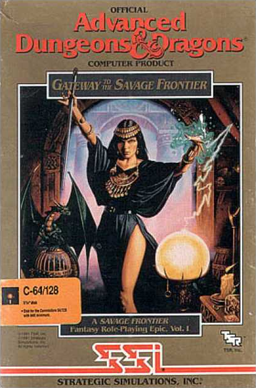
Gateway to the Savage Frontier (1991) is a Gold BoxDungeons & Dragons computer game developed by Beyond Software and published by SSI for the Commodore 64, PC and Amiga personal computers.
The Dungeons & Dragons Basic Game is an introductory version of Dungeons & Dragons (D&D) role-playing game packaged in the form of a board game. The original game was released in 2004 by Wizards of the Coast and was designed by Jonathan Tweet, one of the D&D 3rd edition designers. A new version of this game was released in September 2006.

The Dark Queen of Krynn is the third in a three-part series of Dragonlance Advanced Dungeons & Dragons "Gold Box" role-playing video games. The game was released in 1992.
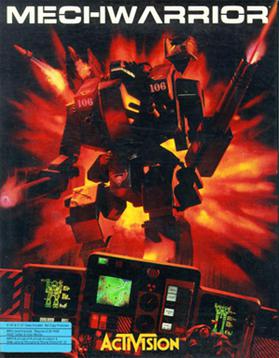
MechWarrior is the second video game released in the BattleTech game series. MechWarrior was the first video game to offer the player a chance to pilot a BattleMech from the view of a pilot. With this game the player has a great deal of freedom when compared to many of the follow-up MechWarrior games, which include choosing missions, buying & selling mechs and parts, hiring lance-mates, and traveling throughout the Inner Sphere. Underneath the major game mechanics, the player had the option of following a role playing style story arc that would unfold over five in-game years.
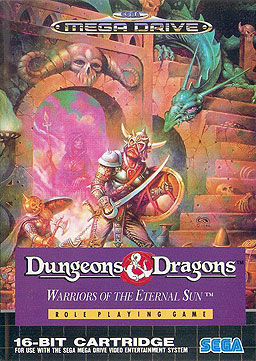
Dungeons & Dragons: Warriors of the Eternal Sun is a role-playing video game developed for the Sega Genesis in 1992 by Westwood Associates. The game tells the story of a party of adventurers who have been transported to an unknown world and must survive against its hostile inhabitants while learning about their new home and seeking allies. It is based on the Dungeons & Dragons (D&D) game rules, and uses creatures and themes from the D&D Hollow World campaign setting, such as Blacklore elves, the Azcans, beastmen, Malpheggi lizardmen, and dinosaurs.

Eye of the Beholder III: Assault on Myth Drannor is a 1993 role-playing video game and the sequel to Eye of the Beholder and Eye of the Beholder II: The Legend of Darkmoon.

Dungeons & Dragons: Heroes is a hack and slash video game with RPG elements. It was published by Atari Interactive and developed by the subsidiary's Hunt Valley development studio, exclusively for Xbox in 2003. It is set in the Dungeons & Dragons universe and is playable solo or with up to four players. Players take on the role of four reincarnated heroes brought back to life to fight their former nemesis, a wizard named Kaedin.
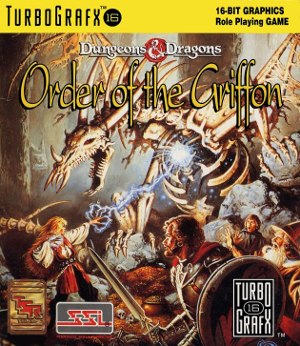
Order of the Griffon is a tactical role-playing game for the TurboGrafx-16 developed by Westwood Associates and based on the tabletop role-playing game Dungeons & Dragons (D&D). The game is set in the nation of Karameikos within D&D's Mystara setting.

DeathKeep is a 1995 video game based on the Dungeons & Dragons fantasy role-playing game. It was released on the 3DO platform, and later converted to the PC. The game is a sequel to Advanced Dungeons & Dragons: Slayer.
